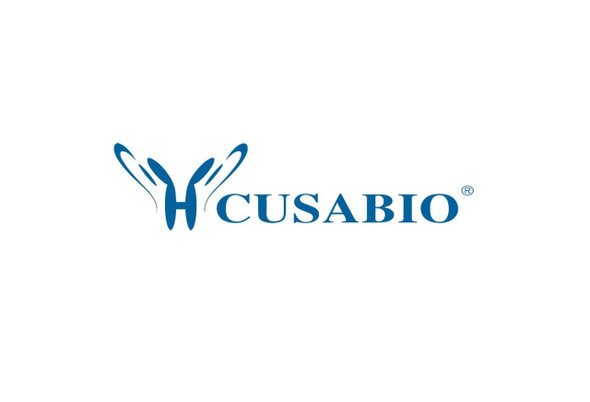Cusabio Human Recombinants
Recombinant Human Squamous cell carcinoma antigen recognized by T-cells 3 (SART3), partial | CSB-YP624010HU
- SKU:
- CSB-YP624010HU
- Availability:
- 25 - 35 Working Days
Description
Recombinant Human Squamous cell carcinoma antigen recognized by T-cells 3 (SART3), partial | CSB-YP624010HU | Cusabio
Alternative Name(s): Tat-interacting protein of 110KDA1 Publication Short name: Tip1101 Publication p110 nuclear RNA-binding protein
Gene Names: SART3
Research Areas: Cancer
Organism: Homo sapiens (Human)
AA Sequence: QRKRARAEKKALKKKKKIRGPEKRGADEDDEKEWGDDEEEQPSKRRRVENSIPAAGETQNVEVAAGPAGKCAAVDVEPPSKQKEKAASLKRDMPKVLHDSSKDSITVFVSNLPYSMQEPDTKLRPLFEACGEVVQIRPIFSNRGDFRGYCYVEFKEEKSALQALEMDRKSVEGRPMFVSPCVDKSKNPDFKVFRYSTSLEKHKLFISGLPFSCTKEELEEICKAHGTVKDLRLVTNRAGKPKGLAYVEYENESQASQAVMKMDGMTIKENIIKVAISNPPQRKVPEKPETRKAPGGPMLLP
Source: Yeast
Tag Info: N-terminal 6xHis-tagged
Expression Region: 600-900aa
Sequence Info: Partial
MW: 35.8 kDa
Purity: Greater than 90% as determined by SDS-PAGE.
Relevance: U6 snRNP-binding protein that functions as a recycling factor of the splicing machinery. Promotes the initial reassembly of U4 and U6 snRNPs following their ejection from the spliceosome during its maturation (PubMed:12032085). Also binds U6atac snRNPs and may function as a recycling factor for U4atac/U6atac spliceosomal snRNP, an initial step in the assembly of U12-type spliceosomal complex. The U12-type spliceosomal complex plays a role in the splicing of introns with non-canonical splice sites (PubMed:14749385). May also function as a substrate-targeting factor for deubiquitinases like USP4 and USP15. Recruits USP4 to ubiquitinated PRPF3 within the U4/U5/U6 tri-snRNP complex, promoting PRPF3 deubiquitination and thereby regulating the spliceosome U4/U5/U6 tri-snRNP spliceosomal complex disassembly (PubMed:20595234). May also recruit the deubiquitinase USP15 to histone H2B and mediate histone deubiquitination, thereby regulating gene expression and/or DNA repair (PubMed:24526689). May play a role in hematopoiesis probably through transcription regulation of specific genes including MYC (By similarity).By similarity4 Publications Regulates Tat transactivation activity through direct interaction. May be a cellular factor for HIV-1 gene expression and viral replication.
Reference: "The finished DNA sequence of human chromosome 12."Scherer S.E., Muzny D.M., Buhay C.J., Chen R., Cree A., Ding Y., Dugan-Rocha S., Gill R., Gunaratne P., Harris R.A., Hawes A.C., Hernandez J., Hodgson A.V., Hume J., Jackson A., Khan Z.M., Kovar-Smith C., Lewis L.R. Gibbs R.A.Nature 440:346-351(2006)
Storage: The shelf life is related to many factors, storage state, buffer ingredients, storage temperature and the stability of the protein itself. Generally, the shelf life of liquid form is 6 months at -20?/-80?. The shelf life of lyophilized form is 12 months at -20?/-80?.
Notes: Repeated freezing and thawing is not recommended. Store working aliquots at 4? for up to one week.
Function: U6 snRNP-binding protein that functions as a recycling factor of the splicing machinery. Promotes the initial reassembly of U4 and U6 snRNPs following their ejection from the spliceosome during its maturation
Involvement in disease:
Subcellular Location: Nucleus, nucleoplasm, Nucleus, Cajal body, Nucleus speckle, Cytoplasm
Protein Families:
Tissue Specificity: Ubiquitously expressed.
Paythway:
Form: Liquid or Lyophilized powder
Buffer: If the delivery form is liquid, the default storage buffer is Tris/PBS-based buffer, 5%-50% glycerol. If the delivery form is lyophilized powder, the buffer before lyophilization is Tris/PBS-based buffer, 6% Trehalose, pH 8.0.
Reconstitution: We recommend that this vial be briefly centrifuged prior to opening to bring the contents to the bottom. Please reconstitute protein in deionized sterile water to a concentration of 0.1-1.0 mg/mL.We recommend to add 5-50% of glycerol (final concentration) and aliquot for long-term storage at -20?/-80?. Our default final concentration of glycerol is 50%. Customers could use it as reference.
Uniprot ID: Q15020
HGNC Database Link: HGNC
UniGene Database Link: UniGene
KEGG Database Link: KEGG
STRING Database Link: STRING
OMIM Database Link: OMIM










